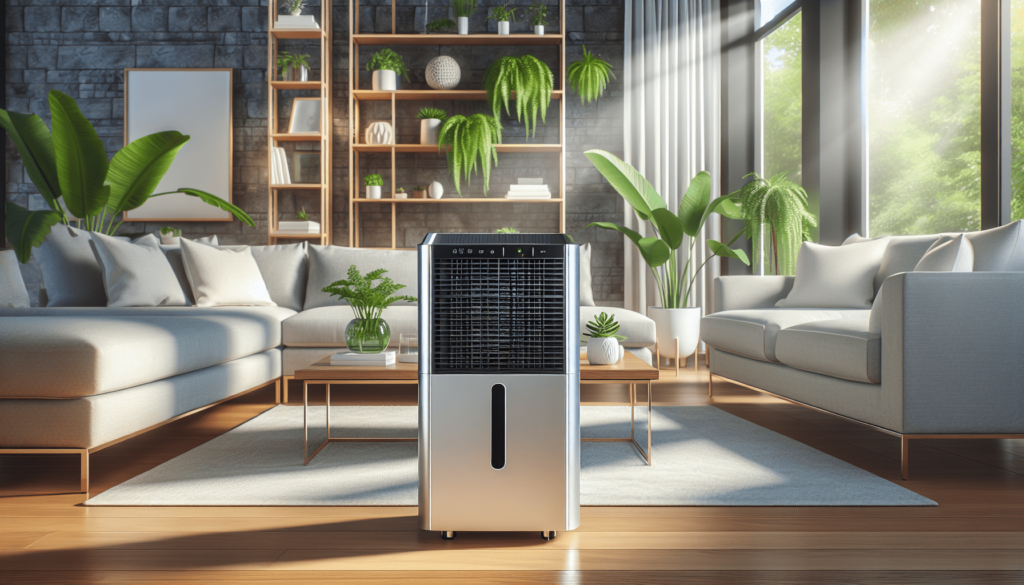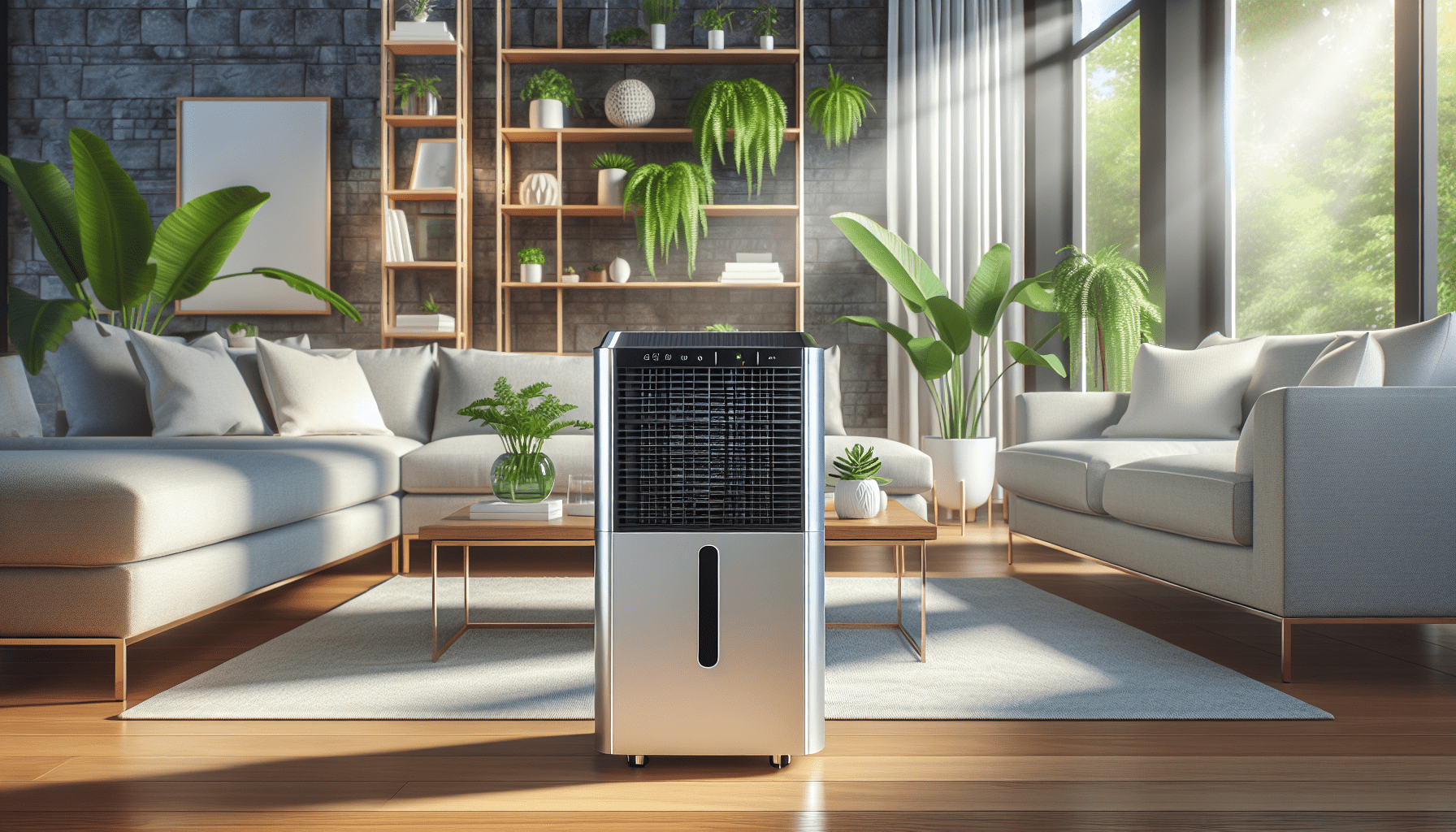Welcome to “The Best Methods to Reduce Indoor Humidity and Prevent Mold,” where you’ll discover the top strategies to keep your home dry and mold-free. You’ll learn about practical steps like using dehumidifiers, improving ventilation, and sealing leaks, all designed to maintain a healthy living environment. By following these tips, you can effectively manage indoor humidity and protect your home from harmful mold growth. Have you ever walked into your home only to be met with a damp, musty smell? It’s unpleasant, right? The culprit is likely high indoor humidity, which can lead to mold growth and other issues. Don’t worry, you’re not alone in dealing with this, and it’s entirely possible to take control.

Understanding Indoor Humidity and Mold
What is Indoor Humidity?
Indoor humidity refers to the amount of moisture in the air within your home. It’s a common issue that can affect your comfort and health. Ideally, indoor humidity should be between 30% and 50%. Levels outside this range can cause various problems.
Why Does Indoor Humidity Cause Mold?
Mold thrives in moist environments and can start growing in areas with humidity levels above 60%. Mold spores are tiny and can float through the air, landing on moist surfaces where they can grow. Not only can mold damage your property, but it can also cause health complications.
The Dangers of Mold
Mold isn’t just unsightly; it can be harmful too. Exposure to mold can lead to respiratory problems, allergies, and even more severe health issues, especially for those with preexisting conditions. It’s essential to address humidity and mold promptly to maintain a healthy living environment.
Top Methods to Reduce Indoor Humidity
You’re probably wondering how to tackle this issue effectively. Don’t worry! There are several proven methods to reduce indoor humidity and prevent mold growth.
Improve Ventilation
Proper ventilation is crucial in controlling indoor humidity levels. Here are some ways to improve your home’s ventilation:
Use Exhaust Fans
Install exhaust fans in high-humidity areas like bathrooms and kitchens. Turn them on while cooking or showering to help remove excess moisture from the air.
Open Windows and Doors
Allow fresh air to circulate by opening windows and doors. This helps to reduce moisture levels, especially during activities that generate humidity.
Ventilation Systems
Consider installing a whole-house ventilation system if natural ventilation options are insufficient. These systems can be particularly effective in areas with high humidity.
Utilize Dehumidifiers
Dehumidifiers are handy devices designed to reduce humidity levels. They come in different sizes to suit various spaces, from single rooms to entire houses.
Portable Dehumidifiers
These are great for targeting specific rooms with high humidity. Place them in problem areas like basements, bathrooms, or bedrooms to maintain ideal humidity levels.
Whole-House Dehumidifiers
If humidity is a widespread issue, a whole-house dehumidifier might be more effective. These units are integrated with your HVAC system to control humidity throughout your home.
Maintain Your HVAC System
Your HVAC system can play a significant role in controlling humidity. Regular maintenance ensures the system operates efficiently and effectively reduces indoor moisture levels.
Regular Servicing
Schedule regular HVAC maintenance to keep your system in top shape. A well-maintained system can better control indoor humidity levels.
Change Filters
Changing HVAC filters regularly not only improves air quality but also ensures that your system can effectively manage humidity.
Use Moisture Absorbers
Moisture absorbers can be an inexpensive and effective way to reduce humidity in smaller spaces.
Silica Gel
Silica Gel packets are great for small, enclosed spaces like closets and cabinets. They absorb excess moisture and prevent mold growth.
Charcoal
Activated charcoal is another effective option. Place it in bowls around your home to help absorb moisture and eliminate odors.
Monitor Indoor Humidity Levels
It’s essential to keep an eye on humidity levels. Using a hygrometer, you can monitor the humidity in different areas of your home.
Adjust Your Habits
Sometimes, simple lifestyle changes can make a significant difference in reducing humidity.
Shorter Showers
Taking shorter, cooler showers can significantly reduce the amount of moisture released into the air.
Dry Clothes Outside
Instead of using an indoor drying rack, dry your clothes outside. This prevents extra moisture from accumulating inside your home.
Preventing Mold Growth
Reducing humidity is half the battle. Next, you need to take steps to prevent mold growth proactively.
Keep Surfaces Dry
Water and moisture can accumulate quickly on various surfaces. Ensuring surfaces remain dry can prevent mold from taking hold.
Wipe Down Wet Areas
After using the sink, shower, or any other water source, wipe down the surfaces to prevent lingering moisture.
Address Leaks Promptly
Leaks are a common source of excess moisture. Addressing them immediately can prevent mold from growing.
Use Mold-Resistant Products
When renovating or building, consider using mold-resistant products to safeguard your home from future issues.
Mold-Resistant Drywall
Specially designed drywall can help prevent mold growth. It’s an excellent option for areas prone to moisture, like bathrooms and basements.
Mold-Resistant Paint
Applying mold-resistant paint creates a barrier that prevents mold spores from taking root.
Regular Cleaning
Routine cleaning can help prevent mold spores from settling and growing.
Use Mold-Killing Products
Certain cleaning products are specifically designed to kill mold spores. Regularly clean your home using these products to maintain a mold-free environment.
Vacuum with a HEPA Filter
HEPA filters can trap mold spores, preventing them from re-entering the air. Use a vacuum with a HEPA filter to keep your home clean.
Monitor and Control Indoor Plants
Indoor plants can be a source of humidity. While they can improve air quality, it’s essential to manage them properly.
Water Plants Sparingly
Overwatering indoor plants can increase humidity levels. Water them only as needed and use containers with proper drainage.
Place Plants in Well-Ventilated Areas
Ensure your indoor plants are in well-ventilated areas to facilitate moisture evaporation.
Handling Existing Mold
If you already have a mold problem, it’s crucial to address it promptly to prevent it from spreading.
Identify Problem Areas
Inspect your home for areas where mold is already present. These areas need immediate attention to prevent further growth.
DIY Mold Removal
For small mold issues, you might be able to tackle the problem yourself. Here’s how:
| Material | Cleaning Solution | Method |
|---|---|---|
| Non-Porous Surfaces (tiles, glass) | Vinegar or hydrogen peroxide solution | Spray and scrub the surface |
| Porous Materials (drywall, carpet) | Professional cleaning products | Remove and replace affected areas |
Professional Mold Remediation
For extensive mold problems, professional remediation might be necessary. Mold remediation specialists can assess the situation and remove mold safely and effectively.

Long-Term Maintenance and Prevention
After addressing immediate issues, focus on long-term maintenance to keep humidity and mold at bay.
Seasonal Checks
Conduct seasonal checks to monitor and address any emerging humidity or mold issues before they become significant problems.
Invest in a Hygrometer
A hygrometer helps you keep an eye on humidity levels, enabling you to take timely action when needed.
Regular HVAC Maintenance
Continuing regular HVAC maintenance ensures your system keeps your indoor environment healthy.
Stay Informed
Keep yourself informed about the latest methods and products for humidity control and mold prevention. This will enable you to stay ahead of any potential problems.
Conclusion
High indoor humidity and mold are common issues, but they’re not insurmountable. By understanding humidity, using effective methods to reduce it, and proactively preventing mold, you can maintain a healthier and more comfortable living environment. From improving ventilation to using dehumidifiers and making simple lifestyle changes, there are plenty of ways to take control. So, take the first step today and say goodbye to that musty smell for good!
